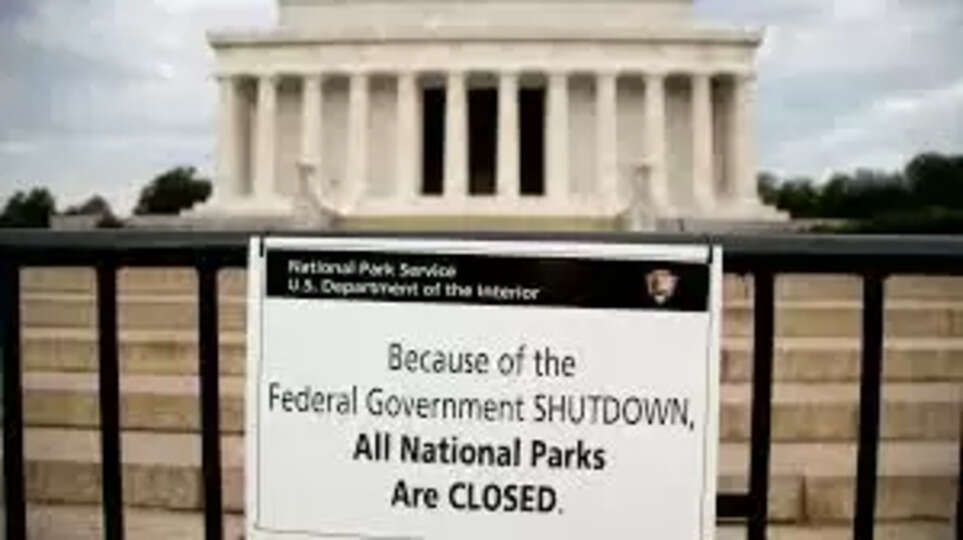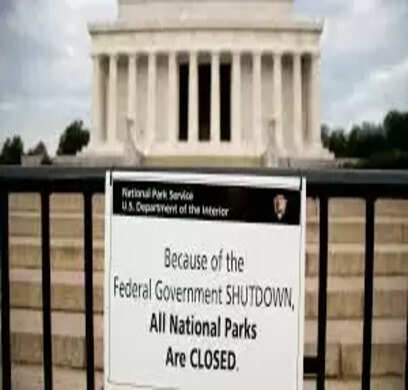National Parks in Crisis: The Millions Lost Daily to Shutdowns and the Crushing Blow to Gateway Communities
Discover the devastating economic and environmental impact of government shutdowns on US national parks and the adjacent "gateway" communities. Learn how the loss of millions in daily visitor spending, furloughed staff, and shuttered services cripples local economies, damages fragile resources, and threatens the future of America's natural treasures.


Introduction
The American landscape is dotted with natural wonders—our National Parks—vast havens of breathtaking beauty that draw millions of visitors each year, serving as vital economic engines for their surrounding, often rural, communities. Yet, when the gears of government grind to a halt due to a funding lapse, these majestic sites become silent victims, and the "gateway" communities that depend on their traffic face a devastating financial crisis. The current government shutdown has thrown the entire National Park System into a state of limbo, furloughing thousands of essential staff and cutting off the lifeline of tourism revenue that sustains local businesses. The human and economic costs are staggering, with communities near national parks facing losses that stretch into the millions of dollars every single day. This crisis highlights not only the immediate financial pain but also the profound risk to the fragile ecosystems and cultural resources that the National Park Service (NPS) is mandated to protect for future generations.
Economic Catastrophe: The Daily Hemorrhage of Millions
The economic fallout from a government shutdown is immediate and severe for the communities neighboring national parks. These gateway towns rely almost exclusively on park visitation to fuel their local economies, which are built on a foundation of hotels, restaurants, tour operators, and small retail shops. When a shutdown occurs, the flow of visitors either halts entirely or is drastically reduced due to the closure of visitor centers, campgrounds, and essential services.
The $80 Million Daily Blow to Local Economies
The financial hemorrhaging for these communities is monumental. The National Parks Conservation Association (NPCA) estimates that local economies surrounding national parks stand to lose as much as $80 million in visitor spending every single day the parks are closed or operating with severely reduced services during a busy month like October. This figure represents lost revenue from hotel bookings, meals, gas purchases, gift shop sales, and all the auxiliary spending that tourists bring. Unlike big cities with diversified economies, many gateway communities have virtually no economic buffer against such a dramatic, sudden drop in tourism income. For a small, seasonal business owner, losing a week or two of peak fall foliage revenue can mean the difference between staying open and permanently closing their doors.
Lost Revenue for Park Maintenance and Upkeep
Beyond the local community impact, the National Park Service itself suffers a significant financial setback. National parks lose an estimated $1 million every day in uncollected fee revenue, which includes entrance and recreation fees. Importantly, this revenue is not simply absorbed by the federal treasury; 80% of these fees are required by law to stay in the park where they are collected to fund essential visitor services, maintenance, and infrastructure improvements. The backlog of deferred maintenance across the park system already exceeds $23 billion, and every day of lost fee revenue only deepens this chronic funding crisis, hindering the ability of the parks to maintain their aging facilities and protect critical resources.
The Pain of Furloughed and Unpaid Workers
The economic distress is acutely felt by the dedicated National Park Service staff. Nearly two-thirds of the NPS workforce—approximately 9,300 people—are furloughed during a shutdown, left without a regular paycheck and facing financial anxiety. Many of these workers live in the gateway communities, and their unpaid salaries also translate to less local spending on groceries, rent, and other necessities, creating a negative ripple effect that further strains the local economy. Though historically furloughed federal workers are often paid retroactively once the government reopens, the immediate loss of income creates substantial hardship, forcing some to rely on community food pantries and local aid.
Operational Chaos and Resource Degradation
The decision to keep many national park areas physically accessible with only a "skeleton crew" of "excepted" staff—primarily law enforcement and emergency personnel—creates a hazardous situation that threatens both visitors and the fragile park resources. The contingency plans often prioritize keeping roads and open-air spaces accessible, but with the majority of staff furloughed, critical services vanish.
Shuttered Visitor Services and Safety Risks
One of the most noticeable impacts is the closure of essential visitor services. Visitor centers, which provide critical information, education, and orientation, are locked. Public restrooms, a necessity in large, dispersed parks, are often closed or left unmaintained. Trash collection ceases, leading to overflowing bins and unsightly littering, which in turn can attract wildlife and create human-wildlife conflict. Without rangers available for guidance, interpretation, or even basic road condition updates, visitors are left confused and sometimes take unnecessary risks. Emergency services, including search and rescue, may be delayed or reliant on local, non-federal resources, increasing the danger for visitors who venture into complex terrain.
Irreversible Damage to Fragile Ecosystems
The lack of adequate staffing is not just an inconvenience; it poses a serious threat to the parks' natural and cultural integrity. The absence of resource protection staff can lead to:
-
Overtourism and Mismanagement: Even with limited access, popular parks can still see a surge in visitors who, without guidance or supervision, engage in unauthorized activities. Reports during shutdowns often include increased instances of illegal camping, unauthorized hiking off-trail, graffiti, and other forms of vandalism that can cause irreparable damage to sensitive ecosystems and cultural sites.
-
Neglected Law Enforcement: While essential law enforcement officers remain, their numbers are drastically reduced, making it nearly impossible to patrol vast territories effectively. This limited oversight contributes to illegal activities like poaching, artifact theft, and the misuse of off-road vehicles.
-
Resource Monitoring Halts: Crucial conservation work, scientific research, and long-term monitoring projects—from tracking endangered species to water quality testing—are immediately suspended. The data gaps created by a prolonged shutdown can hinder the NPS's ability to make informed resource management decisions for years to come.
The Crisis of Park Capacity
Before the current shutdown, the National Park Service was already grappling with a crisis of capacity. Decades of chronic underfunding and recent significant staff reductions—losing a staggering percentage of permanent staff—have left the parks struggling to cope with record-breaking visitation. The shutdown exacerbates this pre-existing condition, pushing the remaining staff to their limits and further delaying the hiring of personnel needed to manage the parks effectively. The damage and increased maintenance backlog incurred during a shutdown will ultimately require more resources and time to rectify once the government reopens, creating a painful cycle of degradation and recovery.
The Human Face of the Crisis: Gateway Communities
For a local resident in a gateway town, the government shutdown is not an abstract political problem; it is a direct threat to their livelihood and community stability.
Concessioners and Small Businesses
Park concessioners—the private companies that operate hotels, restaurants, and tours within the parks—are forced to halt or drastically reduce operations, leading to massive losses and temporary layoffs for their own employees. Outside the park gates, the impact is just as severe. A restaurant owner who budgets for a constant stream of October tourist traffic suddenly has empty tables. A local motel operator sees a wave of cancellations that decimates their projected annual income. These small businesses, which are the backbone of rural economies, struggle to make payroll, pay rent, and weather a financial storm that they did nothing to cause. The closure of a single major national park can effectively wipe out the entire operating season for hundreds of local businesses.
The Long-Term Economic Scarring
While the government eventually reopens and federal workers receive back pay, the lost revenue for local, private-sector businesses is gone forever. Visitors who cancelled their trips do not come back a month later—they simply choose a different vacation destination. This lost tourism revenue creates a long-term economic scar on the community, potentially leading to permanent business closures, job losses in the service sector, and a decline in the tax base that funds local schools and services. The repeated occurrence of shutdowns also damages the reputation of US national parks as reliable tourist destinations, prompting domestic and international travelers to book trips elsewhere, leading to sustained, subtle losses over time.
FAQ's
Q1: How much money do communities near national parks lose daily during a government shutdown?
A: Communities near national parks, often referred to as "gateway" communities, can collectively lose as much as $80 million in visitor spending every day that a government shutdown impacts park operations and access, particularly during busy seasons like October. This loss encompasses spending on lodging, food, gas, retail, and recreational services.
Q2: Why are national parks still sometimes open during a government shutdown if the staff are furloughed?
A: Under certain government shutdown contingency plans, essential park roads, trails, and open-air areas are often left physically accessible to visitors, but with drastically reduced staffing. The majority of the National Park Service workforce is furloughed, leaving only a small "excepted" crew for critical law enforcement and emergency duties. Visitor centers, campgrounds, restrooms, and interpretive programs are typically closed, which leads to safety and resource protection issues.
Q3: What is the main reason for the economic losses in the gateway communities?
A: The primary reason for the severe economic losses is the sudden drop-off in tourism. When visitor services are shut down and the public is warned of limited facilities and safety risks, tourists cancel their trips. These communities are heavily dependent on park visitors for revenue that sustains their local businesses, and without that steady income, their local economies quickly enter a crisis.
Q4: Does the National Park Service lose money as well during a shutdown?
A: Yes, the National Park Service loses approximately $1 million per day in uncollected entrance and recreation fee revenue. This money is critical because 80% of it is legally required to be used directly by the park that collected it for maintenance, visitor services, and infrastructure improvements. The lost fees worsen the long-standing maintenance backlog across the park system.
Q5: What long-term problems does a shutdown create for national parks beyond financial loss?
A: Long-term problems include irreversible damage to park resources due to unsupervised visitation (vandalism, illegal camping, littering), a worsening of the already multi-billion dollar maintenance backlog, and a loss of crucial scientific and conservation data as monitoring programs are suspended. Furthermore, the repeated occurrence of shutdowns damages the national parks' reputation as reliable tourist destinations, potentially leading to sustained, subtle losses in visitation over time.
Conclusion
The economic vitality of America’s national parks and their surrounding gateway communities is inextricably linked to the stable funding and operation of the National Park Service. The daily loss of millions of dollars in visitor spending during a government shutdown is a catastrophic blow that ripples outward, impacting local business owners, furloughed federal employees, and the conservation of our most cherished landscapes. This recurring crisis serves as a stark reminder that the failure to fund the government is not merely a political talking point but a tangible act of harm with a devastating price tag—a cost paid in lost revenue, job insecurity, and, critically, the degradation of the very natural and cultural heritage the parks were created to protect. Ensuring the long-term health of these irreplaceable national treasures requires stable, adequate funding that recognizes the National Park System for what it is: a vital asset to the nation's economy, culture, and environmental well-being.
